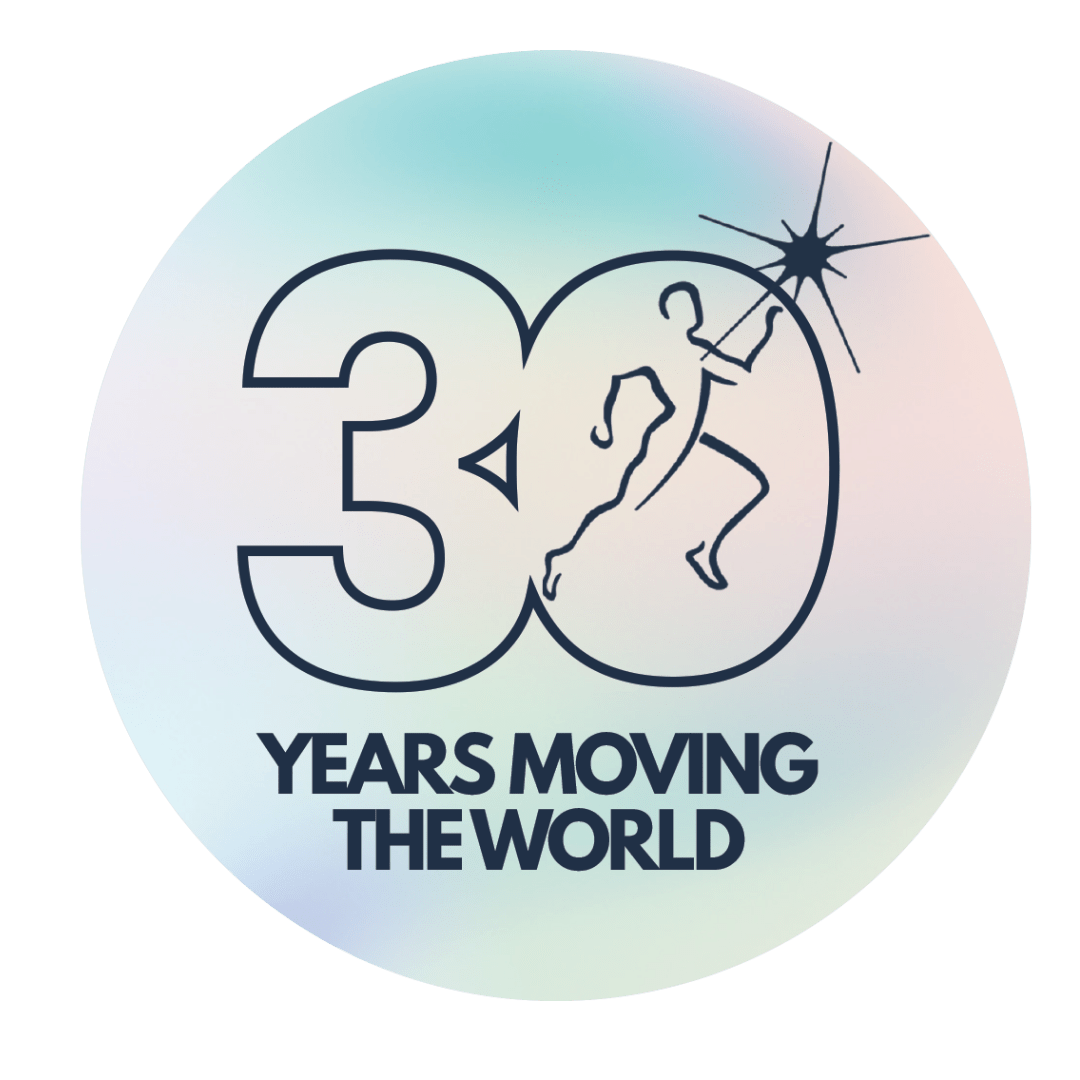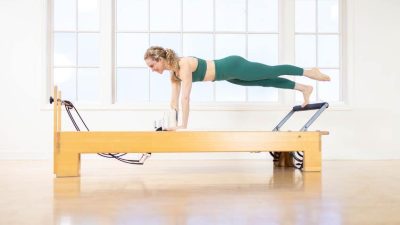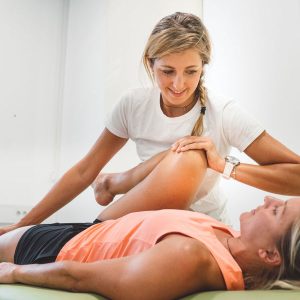
By: Beth Kaplanek
As a Pilates instructor, you play a pivotal role in helping clients manage various conditions through targeted exercise programs. One common condition you may encounter is osteoarthritis (OA) of the hip. Understanding how to tailor Pilates exercises to support clients with hip OA can make a significant difference in their quality of life. This blog post will provide you with valuable insights and practical tips for working with clients dealing with hip osteoarthritis.
Understanding Osteoarthritis of the Hip
The hip is a ball-and-socket joint bathed in synovial fluid. The hip is one of the largest weight-bearing joints in the body with a large degree of range of motion in all planes. It relies on congruency and alignment to maintain its architecture and nourish the articular cartilage; a smooth, slippery substance that protects and cushions the ends of the bones and enables them to move efficiently.
Osteoarthritis (OA) is a degenerative joint disease affecting the articular cartilage of the joint. It is a form of arthritis that occurs in people over 50 years of age but can occur in younger people, too. One in four individuals may experience OA of the hip in their lifetime.
It is considered to be a wear and tear disorder whereby microscopic pits and fissures begin to affect the articular cartilage that overtime left untreated can create bone surface changes, cartilage thinning, joint space narrowing, leaving bone rubbing on bone and creating osteophytes (bone spur formations). The synovial fluid that bathes the joint becomes irritated and loses its consistency and ability to nourish the cartilage efficiently.
Osteoarthritis develops slowly and the pain it causes worsens over time. Factors such as aging, genetics, obesity, previous injuries and developmental dysplasia can contribute to hip OA development.
Symptoms to Watch For
- Pain in the groin that can radiate to the buttocks or knee.
- Difficulty navigating stairs.
- Antalgic gait – abnormal walk that causes a limp to avoid loading the joint.
- Decreased range of motion.
- Morning stiffness that decreases after an hour of movement.
- Difficulty with prolonged sitting, driving and painful squatting.
- Pain that worsens at night.
- Decreased activities of daily living: dressing, lifting and chores.
The Role of Pilates in Managing Hip OA
Pilates is a low-impact exercise that focuses on whole body movement that enhances adaptability and control. It provides strengthening, increases endurance, improves posture, flexibility and stability making it an excellent choice for clients with lower extremity OA. A growing body of research suggests Pilates can significantly improve pain, function, and quality of life in individuals with hip osteoarthritis.
Here’s how Pilates can benefit your clients:
- Strengthening Muscles: Pilates focuses on building core stability and control, which helps stabilize the hip joint and alleviate pain. Strong muscles around the hip can reduce the load on the joint itself.
- Improving Flexibility: Gentle stretching exercises in Pilates can increase the range of motion and reduce stiffness in the hip.
- Enhancing Balance: Improving overall balance through Pilates can help prevent falls and further injuries, which is crucial for clients with compromised hip joints.
- Reducing Pain: Low-impact movements in Pilates provide a safe way to manage pain and improve joint function without causing additional stress to the hip.
- Promoting Posture: Proper postural alignment alleviates unnecessary stress on the hip joint, contributing to pain relief and improved movement patterns.
Key Pilates Exercises for Hip OA
Incorporating the right exercises is essential to ensure the safety and effectiveness of your Pilates sessions. Below you will find some exercises particularly beneficial for clients with hip OA.

- Bent Knee Fall Opening
- Bent Knee Internal Rotation
- Bridges

- Side Kick Series – Short Lever and Long Lever
- Hip Capsule Guides
- Single Leg Circles Modified

Contraindications & Modifications
Not all exercises are suitable for everyone. It’s crucial to avoid exercises that may aggravate a client’s hip pain. Always try to create a movement experience with no pain.
Modifications are key. Each of the key exercises can be modified to cater to different pain levels and client abilities. Work within a range of motion applicable for the client and creates a positive movement experience.
Tips for Working with Clients
- Consultation: Always ensure clients have consulted with their healthcare provider before starting a Pilates program.
- Proper Alignment: Emphasize correct alignment and hip disassociation as tolerated with all movements.
- Gradual Progression: Start with basic exercises and gradually increase intensity based on the client’s comfort and ability.
- Use of Props: Incorporate props like resistance bands, balls, towels, soft rollers and Pilates rings to assist and modify exercises for added support as needed.
Conclusion
As a Pilates Practitioner, your expertise can significantly improve the lives of clients with osteoarthritis of the hip. By incorporating tailored exercises and focusing on strength, endurance, flexibility, balance, and proper alignment, you can help your clients manage their condition effectively and enhance their overall well-being. Remember, the goal is to create a supportive and adaptable Pilates program that addresses the unique needs of each individual by giving a positive movement experience while promoting long-term health and mobility.
Learn more about hip osteoarthritis by joining us on a 3-hour online workshop with Beth Kaplanek where you can earn 3 NCPC Credits.
About the Author
Beth A. Kaplanek, RN, BSN, NCPT is a Practitioner of Pilates for Rehabilitation. She is a post-rehabilitation specialist at the Polestar Pilates headquarters in Miami and works as an educator for Polestar Education. She is serving on the education committee for Bone Health Osteoporosis Foundation. Previously, Kaplanek served for more than 20 years as a registered nurse working in various capacities within emergency room care, operating room care, intensive care, drug counseling, rehabilitation and hospice care.
After undergoing her first hip replacement in 2001, Kaplanek began using Pilates as a form of low impact exercise for strength and flexibility training. She has been teaching Pilates for 23 years and has had the opportunity to see and demonstrate the positive impact that the Method can have on individuals in both the pre-habilitation and post-operative rehabilitation stages.
Beth teaches, shares, and showcases her techniques and work in her course,” The Pilates Teacher’s Perspective of Lower Extremity Pathologies and Joint Replacements.”
Follow Beth on Instagram @bethkaplanek and join her on her online workshop to better understand hip osteoarthritis!
Watch Beth on the Pilates Hour here!
Related






